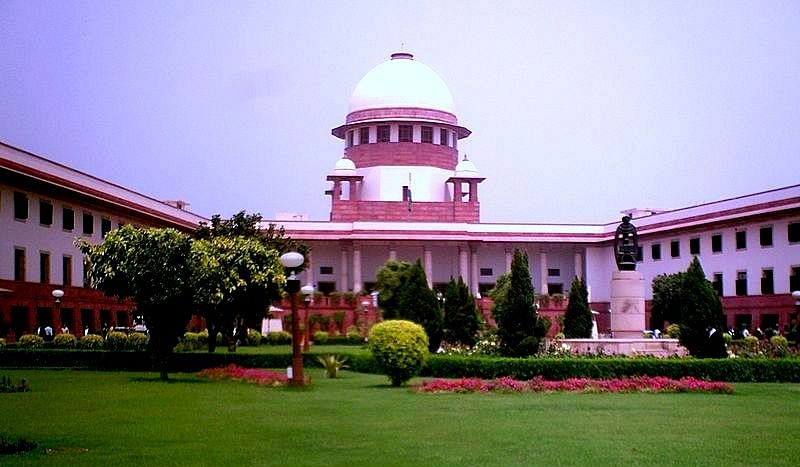Politics
Is Bengaluru Right In Rejoicing Over Supreme Court’s Cauvery Verdict?
- Some in Bengaluru are celebrating the Supreme Court’s verdict on the Cauvery River water issue.
- But what has happened to the water bodies that dotted the city once?
- Administrators have cause to worry because the additional allotment won’t be enough.

Supreme Court/Getty Images
Bengaluru will get an additional 4.75 thousand million cubic feet (TMC) of water to meet its drinking water needs following the Supreme Court verdict on Friday (16 February) allocating an additional 14.75 TMC of Cauvery River water to Karnataka.
The Silicon Valley of India is thirsty like never before and many a social media warrior, especially those claiming to be fighting for the Kannada cause, are jubilant. But one has to feel sorry at the state of affairs in Karnataka. This is no victory. The city is starved of water, after all! Bangaloreans can be happy that they have some additional water though, but then this should also serve as a wake-up call.
One TMC of water, equal to 28,160 million (2,816 crore) litres, can cater to the needs of six lakh people every year. So Bengaluru will get an additional 112,640 million litres per year, benefiting an additional 24 lakh people every year.
The Supreme Court’s acknowledgment of the rising water needs implies that the total number of people that Cauvery will serve goes up to 109 lakh people. But the total population of Bengaluru is 123.4 lakh and counting.
This implies that even with the rise in allocation, some 15 lakh people cannot be provided water if Karnataka relies solely on the Cauvery River water that is already at the mercy of the monsoon each year.
The current water availability is said to be 1,391 MLD – 678 MLD from Cauvery, 672 MLD of groundwater and 41 MLD of recycled water. This means that half of Bengaluru’s water requirement is to be met by groundwater resources.
Bengauru lakes, most of which were interlinked and said to have had a storage capacity of 35 TMC two centuries ago, have however either disappeared or their storage capacity is at a dismal 2 TMC, according to an Indian Institute of Science research carried out by a five-member team led by scientist T V Ramachandra, who also said that Bengaluru’s water crisis was a result of mismanagement of resources by policy makers. The study said Bengaluru gets enough rainfall to quench its thirst, but the problem was with harvesting the rainwater.
Every summer, panic-inducing reports appear with a countdown as the reservoir levels dip by the day. Bengaluru awaits the monsoon and through the monsoon the city watches with bated breath for water levels to rise again.
With advancements in every field possibly imaginable, there is a surprising level of uncertainty surrounding a basic constituent of nature on which our very survival depends.
A trek up any hill or mountain fort in the state gives us an idea of how sensible our forefathers were. Inside a five-layered fort in Tirthahalli, there are two kalyanis (ponds) which are brimming with water. All that is required is the task of maintenance of the structure from collapsing. And this is true of most hilly regions, which have at least one or, more often, two to three ponds that cater to the hundreds who populate the hill forts.
If the ponds up those hills can still be brimming with water, why is it that the lakes in the cities are drying up?
Groundwater levels are dropping every passing year. Recent reports have suggested how Bengaluru might be headed for the worst. As reported by the Times of India here, Bengaluru has taken second place, after Brazil’s Sao Paulo, among 11 global cities that are likely to run out of drinking water.
Water will be the next oil. In fact, it is almost there. The world’s nations will probably go to war for water in the future, as predicted by a few experts.
Introducing ElectionsHQ + 50 Ground Reports Project
The 2024 elections might seem easy to guess, but there are some important questions that shouldn't be missed.
Do freebies still sway voters? Do people prioritise infrastructure when voting? How will Punjab vote?
The answers to these questions provide great insights into where we, as a country, are headed in the years to come.
Swarajya is starting a project with an aim to do 50 solid ground stories and a smart commentary service on WhatsApp, a one-of-a-kind. We'd love your support during this election season.
Click below to contribute.
Latest